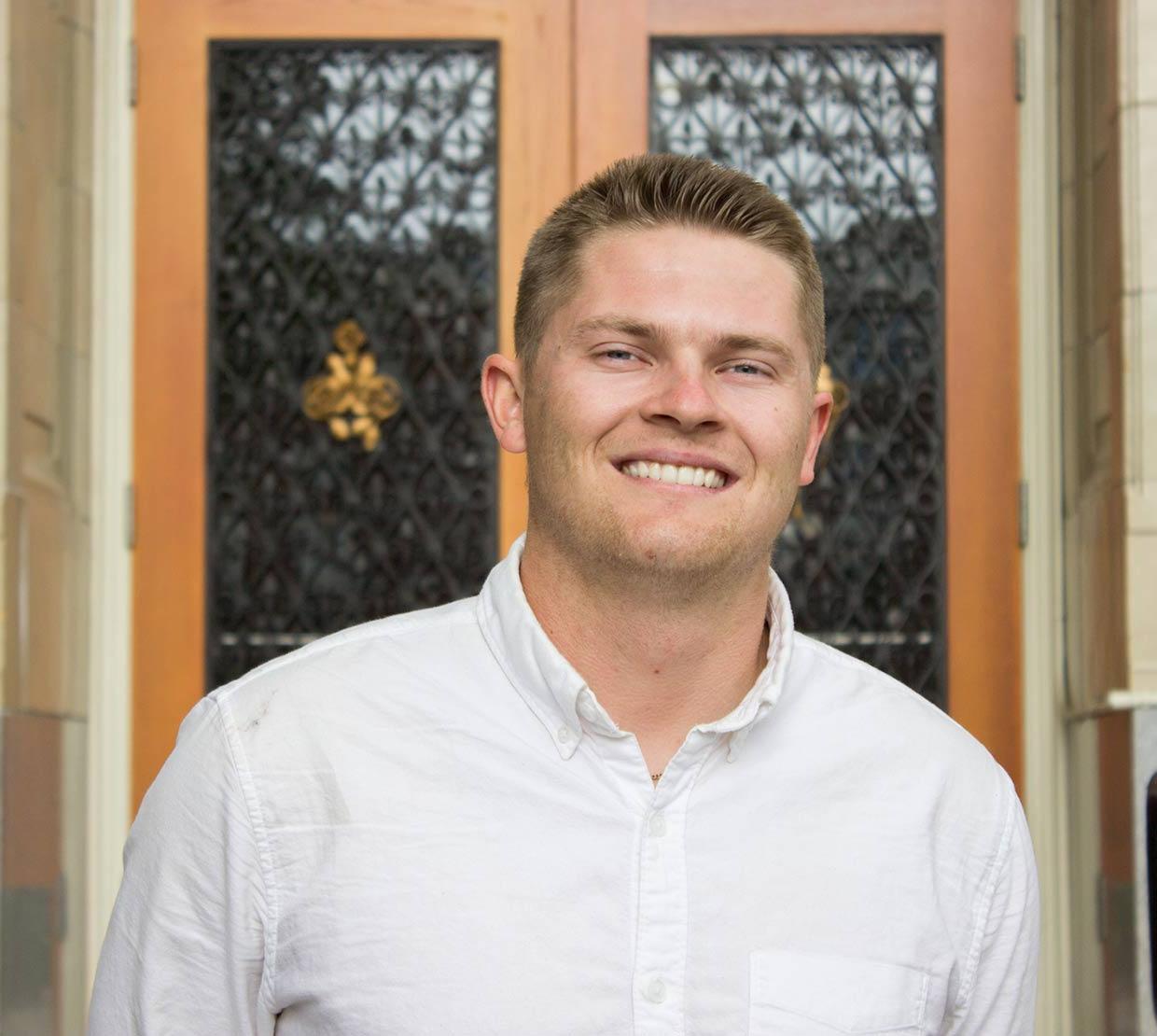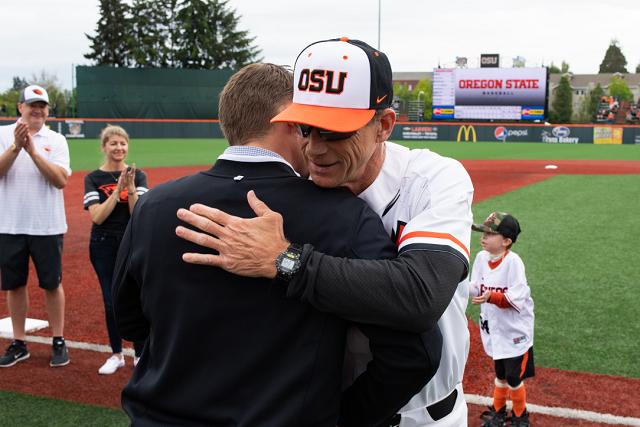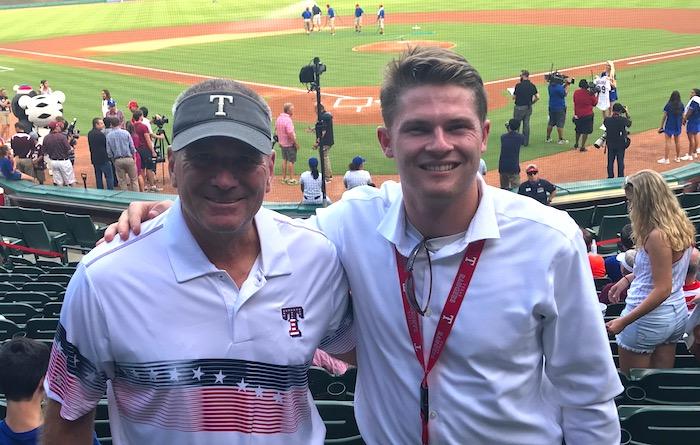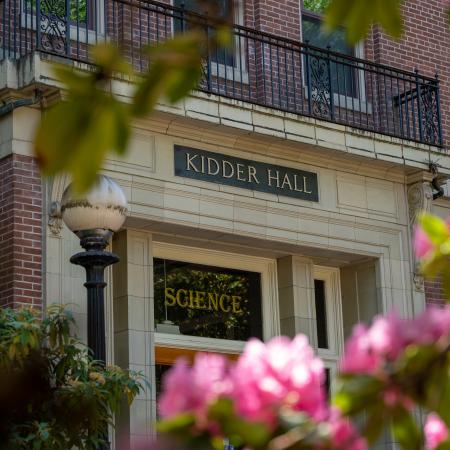Pearson’s statistical insights and diligent work have proven invaluable. His statistical data and analysis led to game-time decisions that contributed to an NCAA record for the highest winning percentage in a season and a record two 23-game winning streak for the team. Responsible for preparing OSU’s team with analytics, scouting reports and game videos, Pearson’s labor paid off handsomely. Last season, he watched the team chalk up triple victories as Pac-12, Regional and Super Regional champions and come in third place in the nation at the College World Series.
It is all about the numbers—a journey from academics to internships
Ever since he arrived at Oregon State in 2014, Pearson has been laser focused on a single objective: Getting the best possible academic preparation to secure a foothold in the profession of baseball analytics. He has done whatever it takes to reach his goal—working 40-60 hours every week with the OSU baseball program, managing all the baseball analytics and administrative details, travelling to dozens of games throughout the spring season, and at the same time staying on top of his mathematics coursework, even getting involved in mathematical and biostatistics research. Not to mention the fact that Pearson is graduating on time. His accomplishments are nothing short of awe-inspiring.
“It has been very challenging, especially with a demanding and rigorous major like mathematics, but I have stayed dedicated and determined, taking three to four math classes a term to graduate on time. I have had to sacrifice a lot of my social life just to get everything done,” said Pearson, who enjoys a 53 percent tuition scholarship at OSU.
Pearson was a junior catcher in Central Catholic and Lake Oswego High School’s baseball teams in the Portland area and nearly made it as a walk-on for the OSU baseball team but the spot closed up. Coach Casey gave him a position in baseball operations and Pearson stayed on. Initially enrolled as a business major, Pearson quickly realized he would require a more systematic and thorough training in mathematics and statistics to reach his career goals. He switched to mathematics with a minor and option in statistics, which is only offered to math majors.
“When my playing career ended I wanted to stay in the game as long as I could. I knew for me to stay in baseball the best way would be the front office route—the analytics, the numbers, the roster decisions. So, I knew I had to have a really strong degree in math and statistics to stand out because the baseball industry is very competitive.”
Pearson has spent a vast amount of time studying the careers of professional baseball managers to decide which major would suit him best. He noted that the majority of them had degrees in statistics, mathematics and economics. His ultimate goal is to run a professional Major League Baseball team and become the youngest general manager in baseball history. Currently only 22, Pearson certainly has a head start in major league baseball.
“I wanted to take my degree very seriously and get as much mathematics and statistics as possible. While the baseball industry is based on statistics, the coursework in mathematics has taught me meticulous attention to detail that is very valuable. Advanced classes in discrete mathematics and advanced calculus pushed my intellectual ability to a higher level,” said Pearson.
This summer Pearson will start his career as an International Assistant for the Texas Rangers in Arlington where his primary responsibilities will be international scouting and assisting upper management with projects related to statistics and baseball analytics. While hundreds of amateur baseball analysts might harbor dreams of working at major baseball leagues, Pearson has actually managed to accomplish just that with careful planning, determination and hard work.
Pearson was offered the job after an interview process that lasted four months. He notched up other impressive job offers. The legendary New York Yankees too offered a job. But Pearson, who loves interacting with people, found the latter position to be too heavily focused on analytics. He opted for the Texas Rangers because it combined player development with analytics, giving him opportunities to travel, interact with and scout players. As part of his job, he will travel to Puerto Rico, Japan and the Dominican Republic to identify the best talent to bring to Texas.
The Texas Rangers have a multi hundred-million dollar income, and heavy responsibility rests on the team of analysts who utilize statistics to tell the difference between players in order to recruit the best. “We are going to use statistics to find value. You could look at a player and not see his hidden value without the use of statistics,” said Pearson.
Pearson amassed plenty of on-the-job training in the statistical science of baseball as an undergraduate. At the age of 21, he became the youngest intern to be hired by a major baseball team when he he spent the summer of 2017 working with the Texas Rangers as an analytics assistant with their analytics team.





